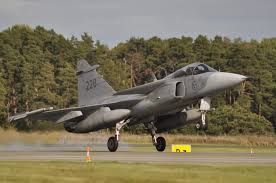Russian Pilots’ Encounters with NATO Forces: Rising Tensions

Introduction
The increasing frequency of encounters between Russian pilots and NATO forces has become a focal point of international military discourse. With ongoing tensions between Russia and the West, these interactions not only highlight the complex geopolitical landscape but also raise questions regarding safety and the potential for escalation in confrontations over European airspace.
Recent Developments
In the past few months, numerous reports have emerged detailing near-miss incidents involving Russian military aircraft and NATO jets, particularly in the Baltic Sea region and over the Arctic. NATO has characterized these encounters as ‘unsafe’ and ‘unprofessional’, indicating that these situations could lead to unintended consequences. For instance, on multiple occasions, NATO fighter jets, including British and American aircraft, have been scrambled to intercept Russian planes that were allegedly flying close to or within NATO airspace without proper communication procedures.
Military Exercises and Provocations
In September 2023, Russia conducted a large-scale military exercise named ‘Zapad-2023’, which involved simulations of air combat scenarios close to NATO borders. Correspondingly, NATO initiated defensive measures which included joint exercises in response to perceived threats. Both sides argue that their military activities are defensive in nature; however, the proximity of their operations increases the risk of miscalculations. Moreover, incidents related to reconnaissance flights have prompted discussions within NATO about enhancing air policing missions across member states.
Reactions from NATO and Russia
NATO officials have expressed concern over the aggressive behavior exhibited by Russian pilots, urging for better communication to prevent further incidents. Conversely, the Kremlin has defended their actions, asserting that their aircraft were conducting routine operations and that NATO’s military posture is provocative. This strain of dialogue adds to the urgency for diplomatic engagements to de-escalate tensions.
Conclusion
The encounters between Russian pilots and NATO forces serve as a critical reminder of the fragile security environment in Europe today. Analysts predict that unless both parties engage in open dialogue and robust confidence-building measures, the likelihood of miscalculations or military confrontations may increase. The situation remains fluid, and it is essential for nations involved to prioritise communication to mitigate risks and enhance stability in the region. Ultimately, the findings from these encounters will influence future military strategies and diplomatic approaches between Russia and NATO member states.









